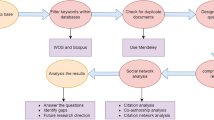Abstract
Since software development has become an essential investment for many organizations recently, both the software industry and academic communities are more and more concerned about a reliable and accurate estimation of the software development effort. This study puts forward six widely used case-based reasoning (CBR) methods with optimized weights derived from the particle swarm optimization (PSO) method to estimate the software effort. Meanwhile, four combination methods are adopted to assemble the results of independent CBR methods. The experiments are carried out using two datasets of software projects from Desharnais dataset and Miyazaki dataset. Experimental results show that different CBR methods can get the best results in different parameters settings, and there is not a best method for the software effort estimation among the six different CBR methods. Currently, combination methods proposed in this study outperform independent methods, and the weighted mean combination (WMC) method can get the better result.
Similar content being viewed by others
References
Boehm BW, Papaccio PN (1988) Understanding and controlling software costs. IEEE Trans Softw Eng 14:1462–1477
Boehm B, Abts C, Chulani S (2000) Software development cost estimation approaches: a survey. Ann Softw Eng 10:177–205
Heemstra FJ (1992) Software cost estimation. Inf Softw Technol 34:627–639
Huang S, Chiu N (2006) Optimization of analogy weights by genetic algorithm for software effort estimation. Inf Softw Technol 48:1034–1045
Li J, Chen Z, Wei L, Xu W, Kou G (2007) Feature selection via least squares support feature machine. Int J Inf Technol Decis Making 6:671–686
Li J, Wei L, Li G, Xu W (2010) An evolution-strategy based multiple kernels multi-criteria programming approach: the case of credit decision making. Decis Support Syst. doi:10.1016/j.dss.2010.11.022
Huang S, Chiu N, Chen L (2008) Integration of the grey relational analysis with genetic algorithm for software effort estimation. Eur J Oper Res 188:898–909
Li J, Wu D, Cai C, Xu W (2010) Case based reasoning method with optimized weight derived by particle swarm optimization for software effort estimation. J Comput Syst Sci (forthcoming)
Medeiros J, Schirru R (2008) Identification of nuclear power plant transients using the Particle Swarm Optimization algorithm. Ann Nucl Energy 35:576–582
Li Q, Wang Q, Yang Y, Li M (2008) Reducing biases in individual software effort estimations: a combining approach. In: International symposium on empirical software engineering and measurement. ACM Press, New York, pp 223–232
Peng Y, Wang G, Wang H (2010) User preferences based software defect detection algorithms selection using MCDM. Inf Sci. doi:10.1016/j.ins.2010.04.019
Peng Y, Kou G, Wang H, Ko FIS (2009) Empirical evaluation of classifiers for software risk management. Int J Inf Technol Decis Making 8:749–767
MacDonell S, Shepperd M (2003) Combining techniques to optimize effort predictions in software project management. J Syst Softw 66:91–98
Jorgensen M, Shepperd M (2007) A systematic review of software development cost estimation studies. IEEE Trans Softw Eng 33:33–53
Chiu N, Huang S (2007) The adjusted analogy-based software effort estimation based on similarity distances. J Syst Softw 80:628–640
El Emam K, Benlarbi S, Goel N, Rai S (2001) Comparing case-based reasoning classifiers for predicting high risk software components. J Syst Softw 55:301–320
Stamelos L, Angelis L, Morisio M, Sakellarise E, Bleris GL (2003) Estimating the development cost of custom software. Inf Manag 40:729–741
Lin R, Wang Y, Wu C, Chuang C (2009) Developing a business failure prediction model via RST, GRA and CBR. Expert Syst Appl 36:1593–1600
Khoshgoftaar T, Seliya N, Sundaresh N (2006) An empirical study of predicting software faults with case-based reasoning. Softw Qual J 14:85–111
Cho S, Hong H, Ha B (2010) A hybrid approach based on the combination of variable selection using decision trees and case-based reasoning using the Mahalanobis distance: for bankruptcy prediction. Expert Syst Appl 37:3482–3488
Kumar K, Singh Y, Sanyal S (2009) Hybrid approach using case-based reasoning and rule-based reasoning for domain independent clinical decision support in ICU. Expert Syst Appl 36:65–71
Li H, Sun J (2009) Gaussian case-based reasoning for business failure prediction with empirical data in China. Inf Sci 179:89–108
Shepperd M, Schofield C (1997) Estimating software project effort using analogies. IEEE Trans Softw Eng 23:736–743
Mendes E, Lokan C, Harrison R, Triggs C (2005) A replicated comparison of cross-company and within-company effort estimation models using the isbsg database. In: 11th IEEE international software metrics symposium (METRICS’05). IEEE Press, New York, pp 36–45
Bates J, Granger C (1969) The combination of forecasts. OR 20:451–468
Clemen RT (1989) Combining forecasts: a review and annotated bibliography. Int J Forecast 5:559–583
Rapach D, Strauss J (2008) Forecasting US employment growth using forecast combining methods. J Forecast 27:75–93
Marchetti D, Parigi G (2000) Energy consumption, survey data and the prediction of industrial production in Italy: a comparison and combination of different models. J Forecast 19:419–440
Wong K, Song H, Witt S, Wu D (2007) Tourism forecasting: to combine or not to combine? Tour Manag 28:1068–1078
Lyu M, Nikora A (1992) Applying reliability models more effectively. IEEE Softw 9:43–52
Hsu C, Rodas N, Huang C, Peng K (2010) A study of improving the accuracy of software effort estimation using linearly weighted combinations. In: IEEE 34th annual computer software and applications conference workshops. IEEE Press, New York, pp 98–103
Aamodt A, Plaza E (1994) Case-based reasoning: foundational issues, methodological variations, and system approaches. AI Commun 7:39–59
Mair C, Kadoda G, Lefley M, Phalp K, Schofield C, Shepperd M, Webster S (2000) An investigation of machine learning based prediction systems. J Syst Softw 53:23–29
Miyazaki Y, Terakado M, Ozaki K, Nozaki H (1994) Robust regression for developing software estimation models. J Syst Softw 27:3–16
Author information
Authors and Affiliations
Corresponding author
Rights and permissions
About this article
Cite this article
Wu, D., Li, J. & Liang, Y. Linear combination of multiple case-based reasoning with optimized weight for software effort estimation. J Supercomput 64, 898–918 (2013). https://doi.org/10.1007/s11227-010-0525-9
Published:
Issue Date:
DOI: https://doi.org/10.1007/s11227-010-0525-9




